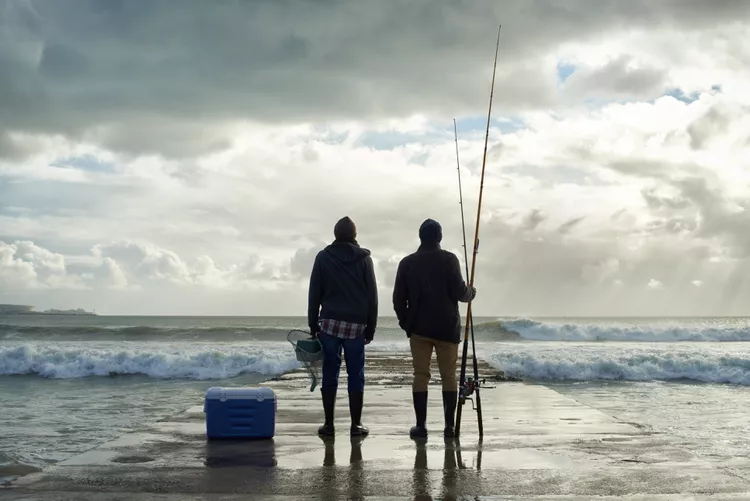Summary
There are quite a number of anglers who either by choice or circumstance do not fish from a boat but nonetheless are passionate onshore anglers. Land-based platforms such as wharfs, docks, piers, and jetties may be popular with many of them, but those who regularly fish the surf tend to be an independent breed of their own.
Getting to the Fish
Surf fishing anglers come in all varieties but can be just as fanatical as their boat-based counterparts. What some of them lack in the way of a boat, they more than make up for in their beach vehicles. Some four-wheel-drive units are equipped similarly to offshore cruisers, capable of carrying ample tackle and fishing equipment to get the job done. Furthermore, in certain areas, experienced surf anglers are allowed to drive for miles down remote beach stretches while looking for telltale signs of activity, such as birds working a school of baitfish or fish feeding on the surface.
Rods and Reels
As surf fishing is a specialized type of angling, it demands appropriate tackle that matches the type of fishing planned. Most surf rods are generally between 10 to 13 feet long and can cast bait and a 6-ounce lead weight up to 100 yards beyond the breaking surf. Consequently, a heavy-duty spinning reel that aligns with your rod’s line weight specifications is the best choice for success.
Weights and Sinkers
The weights used in surf fishing can vary based on the surge or current. Many anglers prefer the pyramid sinker, which digs into the sandy or muddy bottom and holds your rig more securely in the area where it has been cast. Others may choose flat sand sinkers that drift slowly with the current, or torpedo sinkers designed for aerodynamics to allow for longer casts. Ultimately, the best sinker is the one that fits your immediate needs, so it is advisable to carry a variety in your tackle box.
Baits and Lures
Baits can range from live baitfish found in the area to invertebrates such as bloodworms, shrimp, or small crabs. For certain species, cut bait or sand fleas may be ideal. Anglers targeting striped bass often opt for live eels. Moreover, artificial baits are also effective and can sometimes even outperform live bait. Productive lures in the surf include spoons, topwater plugs, and diving minnows, as well as a variety of plastic baits that can be used on jig heads or drop-shot rigs.
Where Can I Fish?
Surf fishing is a beloved activity across the globe and can be done from large inshore rocks or boulders, tidal pools, and jagged promontories above the crashing waves, just as effectively as while standing on a sandy beach. Whether you’re wading chest-deep casting to Spanish mackerel in the clear shallows of Hilton Head Island or standing near a bonfire on a volcanic cliff on the Kona coast waiting for a 40-pound Ulua to bite, always seize the opportunity to explore new surf fishing locations. In the end, while shorelines may differ, the tactics will remain the same.
The Bottom Line
If you lack a boat yet still harbor a strong desire to catch some fish, possibly even sizable ones, why not give surf fishing a try? It is a fun, relatively inexpensive activity that provides some healthful exercise. Furthermore, one of the best aspects of a successful day fishing the surf is the delicious rewards it brings to the dinner table.





